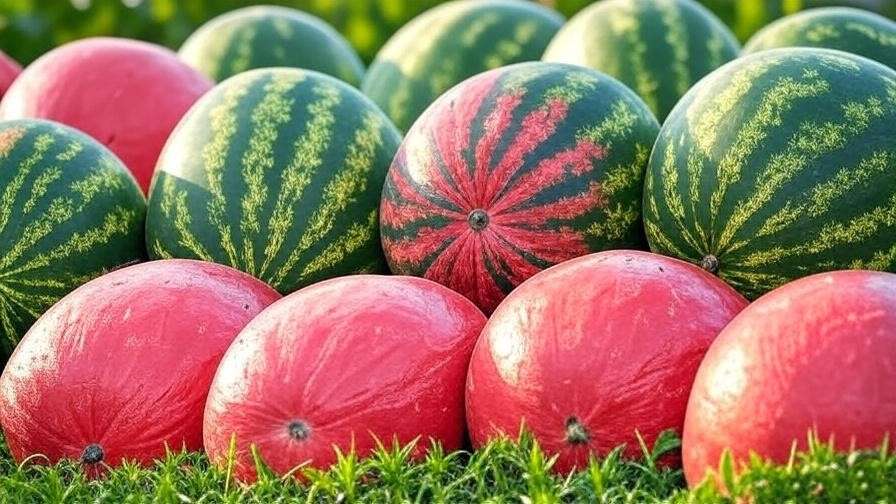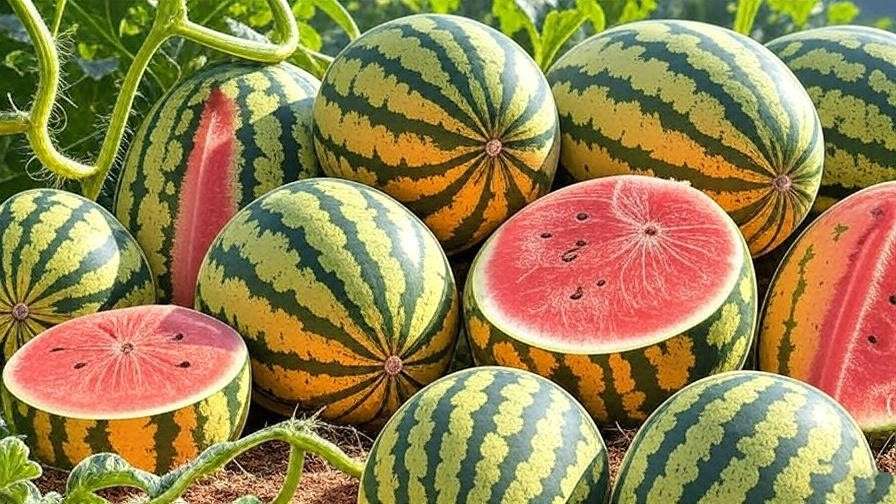Imagine slicing into a watermelon that bursts with vibrant hues—golden yellows, creamy whites, or even striped rinds with starry speckles. Colorful watermelons, like the heirloom ‘Moon and Stars’ or the sweet ‘Orangeglo,’ are not just a feast for your taste buds but a stunning addition to any garden. As a plant care enthusiast, you may dream of growing these unique varieties but worry about their specific needs. Fear not! This comprehensive guide, backed by decades of horticultural expertise and trusted agricultural practices, will walk you through every step to grow healthy, vibrant colorful watermelons. Whether you’re a beginner or a seasoned gardener, you’ll discover practical solutions to common challenges and expert tips to ensure a bountiful harvest.
What Makes Colorful Watermelons Special?
Unique Varieties of Colorful Watermelons
Colorful watermelons stand out for their striking appearances and delightful flavors. Varieties like ‘Moon and Stars,’ with its dark green rind speckled with yellow spots, or ‘Yellow Doll,’ a compact melon with bright yellow flesh, bring diversity to your garden. ‘Tendersweet Orange’ offers sweet, orange-hued flesh, while ‘Cream of Saskatchewan’ boasts creamy white flesh with a mild flavor. According to research from the University of Illinois Extension, these heirloom varieties often carry disease resistance and unique traits, making them rewarding choices for home gardeners. Each variety has distinct growth requirements, but all share a love for warm climates and well-drained soil.
| Variety | Flesh Color | Rind Appearance | Days to Harvest | Flavor Profile |
| Moon and Stars | Red | Dark green with yellow spots | 85–95 days | Sweet, juicy |
| Yellow Doll | Yellow | Green with dark stripes | 65–75 days | Crisp, honey-like |
| Tendersweet Orange | Orange | Light green with stripes | 80–90 days | Sweet, mild |
| Cream of Saskatchewan | White | Pale green with stripes | 80–85 days | Mild, refreshing |
Why Grow Colorful Watermelons?
Beyond their eye-catching aesthetics, colorful watermelons offer practical benefits. They attract pollinators, enhance garden biodiversity, and can fetch premium prices at farmers’ markets due to their rarity. Many gardeners fear these varieties are harder to grow, but with proper care, they’re just as manageable as traditional watermelons. Growing colorful watermelons solves the problem of wanting unique, flavorful produce while adding a conversation piece to your garden. Plus, their vibrant colors make them perfect for fresh salads, smoothies, or Instagram-worthy dishes.
Preparing to Grow Colorful Watermelons
Choosing the Right Variety for Your Climate
Colorful watermelons thrive in warm climates, ideally in USDA Hardiness Zones 5–11, where temperatures stay above 70°F during the growing season. For instance, ‘Yellow Doll’ is ideal for shorter seasons in cooler zones, maturing in as little as 65 days, while ‘Moon and Stars’ suits warmer regions with longer growing periods. A gardener in Zone 7 successfully grew ‘Moon and Stars’ by starting seeds indoors, as shared in a case study from the Cornell Cooperative Extension. Check your local frost dates and select a variety that aligns with your growing season to ensure success.
Selecting the Perfect Location
Watermelons demand full sun—6 to 8 hours daily—and ample space for their sprawling vines, which can stretch 10–15 feet. Choose a well-drained site to prevent root rot, a common issue noted in Texas A&M AgriLife Extension studies. For small-space gardeners, consider trellising vines or growing compact varieties like ‘Yellow Doll’ in containers. Ensure the location is sheltered from strong winds but accessible to pollinators like bees. A south-facing slope or raised bed can maximize warmth and drainage.
Soil Preparation and Testing
Healthy soil is the foundation of vibrant watermelon plants. Test your soil’s pH (aim for 6.0–6.8) using a home testing kit or send a sample to your local agricultural extension. Amend acidic soils with lime or alkaline soils with sulfur, as recommended by the University of California Agriculture and Natural Resources. Incorporate organic matter like compost or aged manure to boost fertility and improve drainage. A well-prepared soil mix should feel loose and crumbly. Here’s a quick checklist:
- Test soil pH and adjust as needed.
- Add 2–3 inches of compost or manure.
- Till to a depth of 12 inches for root growth.
- Ensure drainage to avoid waterlogging.
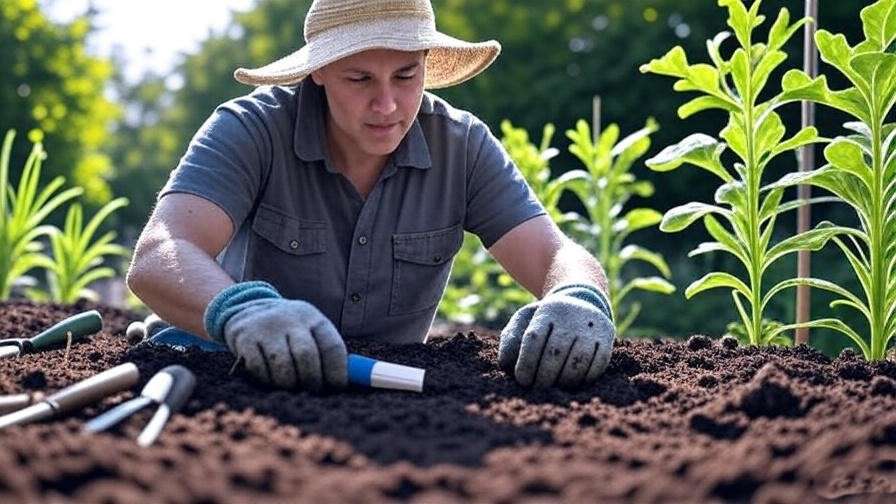
Planting Colorful Watermelons: Step-by-Step Guide
When and How to Plant
Plant colorful watermelon seeds after the last frost when soil temperatures reach at least 70°F, typically late spring to early summer. Direct sowing is ideal, as watermelons dislike root disturbance. Sow seeds 1 inch deep, spacing them 3 feet apart in rows 6–8 feet apart. For smaller gardens, create mounds (hills) with 2–3 seeds per mound, thinning to the strongest seedling. According to Purdue University’s Extension, proper spacing ensures adequate sunlight and air circulation, reducing disease risk.
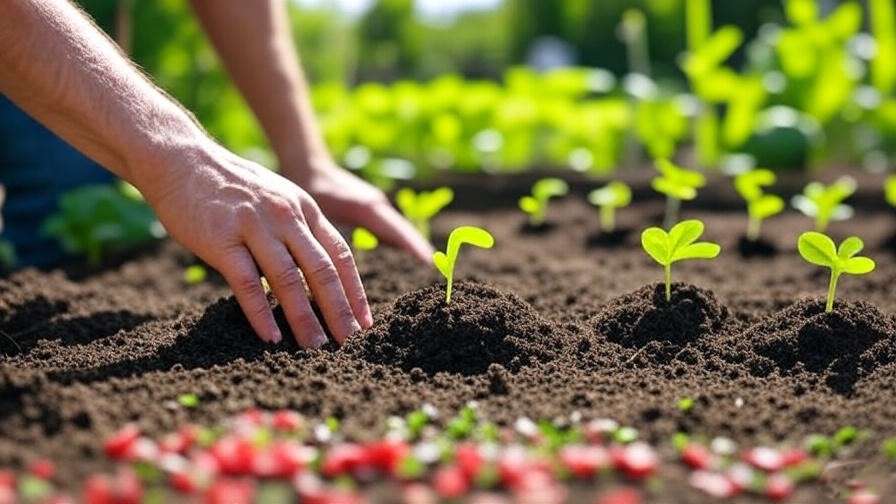
Watermelon Seed Selection and Sourcing
Choose high-quality seeds from reputable suppliers like Baker Creek Heirloom Seeds or Johnny’s Selected Seeds. Heirloom varieties like ‘Moon and Stars’ preserve unique traits, while hybrids like ‘Yellow Doll’ may offer disease resistance. Check for seeds labeled as certified organic or non-GMO for quality assurance. Store seeds in a cool, dry place to maintain viability. For best results, select seeds suited to your climate and growing season length.
Starting Seeds Indoors (Optional)
In cooler climates, start seeds indoors 3–4 weeks before the last frost. Use biodegradable peat pots to minimize transplant shock. Fill pots with a seed-starting mix, plant seeds ½ inch deep, and keep them warm (75–85°F) using a heat mat. Provide 16 hours of light daily with grow lights. Transplant seedlings when they have 2–3 true leaves and outdoor temperatures are consistently warm. A gardener in Michigan reported success with ‘Cream of Saskatchewan’ using this method, as noted in a local extension report.
Caring for Colorful Watermelon Plants
Watering Requirements
Watermelons need consistent moisture, especially during flowering and fruit development. Provide 1–2 inches of water per week, adjusting for rainfall. Use drip irrigation or soaker hoses to deliver water directly to the roots, minimizing leaf wetness and disease risk. Overwatering can lead to root rot, while under-watering stunts fruit growth. Monitor soil moisture with a simple finger test—water if the top inch feels dry. A study from the University of Florida IFAS Extension emphasizes deep, infrequent watering for optimal root health.
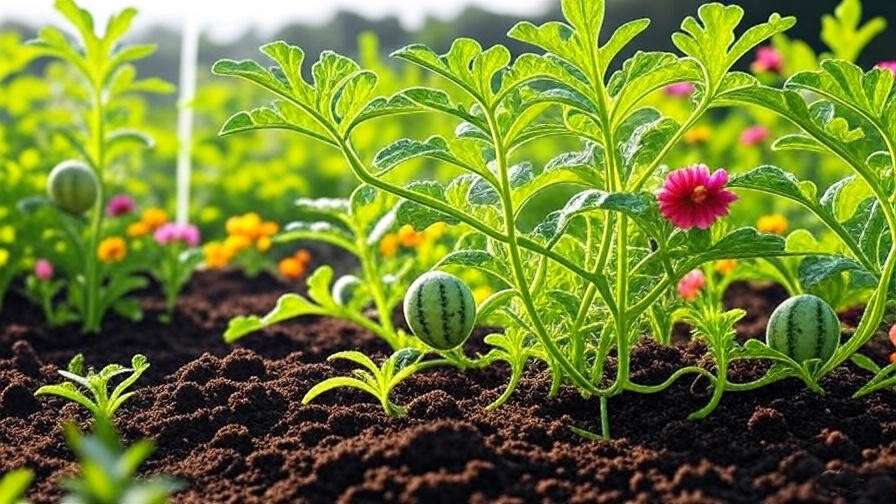
Fertilizing for Optimal Growth
Fertilize colorful watermelons at key stages: pre-planting, vegetative growth, and fruiting. Apply a balanced 10-10-10 fertilizer before planting, followed by a high-potassium fertilizer (e.g., 5-10-15) during fruit development. Avoid excessive nitrogen, which promotes leafy growth over fruit. Side-dress with compost or a slow-release fertilizer every 3–4 weeks. Watch for nutrient deficiencies: yellowing leaves may indicate nitrogen deficiency, while poor fruit set could signal low potassium. The North Carolina State Extension provides detailed nutrient management guides for melons.
Pruning and Training Vines
Pruning improves air circulation and fruit quality. Remove secondary vines that don’t bear fruit, leaving 2–3 strong vines per plant. For space-saving, train vines onto a sturdy trellis or A-frame, supporting developing fruit with slings made from old fabric. This method, praised in Organic Gardening Magazine, works well for compact varieties like ‘Yellow Doll.’ Regularly check for overcrowded growth and trim as needed to prevent disease.
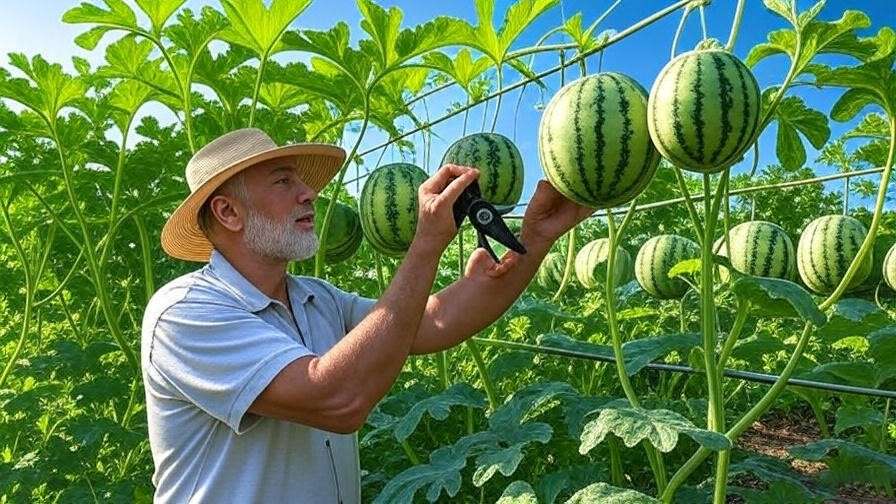
Managing Pests and Diseases
Common Pests Affecting Watermelons
Pests like aphids, cucumber beetles, and spider mites can damage colorful watermelon plants. Aphids suck sap, causing curled leaves, while cucumber beetles spread bacterial wilt. Use organic controls like neem oil or insecticidal soap for aphids and spider mites. Row covers protect young plants from beetles, but remove them during flowering to allow pollination. A Virginia Tech study highlights integrated pest management (IPM) as an effective strategy, combining traps, beneficial insects, and cultural practices.
Preventing and Treating Diseases
Common diseases include powdery mildew (white patches on leaves) and fusarium wilt (wilting vines). Prevent powdery mildew with proper spacing and morning watering to keep foliage dry. For fusarium wilt, choose resistant varieties like ‘Yellow Doll’ and rotate crops every 3–4 years. If disease appears, remove affected plant parts and apply organic fungicides like sulfur for mildew. The University of Minnesota Extension recommends sanitation practices, such as cleaning tools and removing plant debris, to reduce disease spread.
Companion Planting for Pest Control
Companion planting enhances pest control and pollination. Marigolds deter aphids and nematodes, while nasturtiums repel cucumber beetles. Plant borage or clover nearby to attract bees, boosting fruit set. Avoid planting watermelons near potatoes, which attract similar pests. A companion planting chart can help:
| Companion Plant | Benefit |
| Marigolds | Repels aphids, nematodes |
| Nasturtiums | Deters cucumber beetles |
| Borage | Attracts pollinators |
Harvesting and Storing Colorful Watermelons
When to Harvest
Harvest colorful watermelons when fully ripe for the best flavor. Look for these signs: a yellow or creamy belly where the melon rests on the ground, a dull rind surface, and a dried, brown tendril near the fruit. For ‘Yellow Doll,’ tap the melon—if it sounds hollow, it’s ready. Timing varies by variety: ‘Moon and Stars’ takes 85–95 days, while ‘Yellow Doll’ may be ready in 65 days. The University of Georgia Extension notes that harvesting too early results in bland fruit, so patience is key.
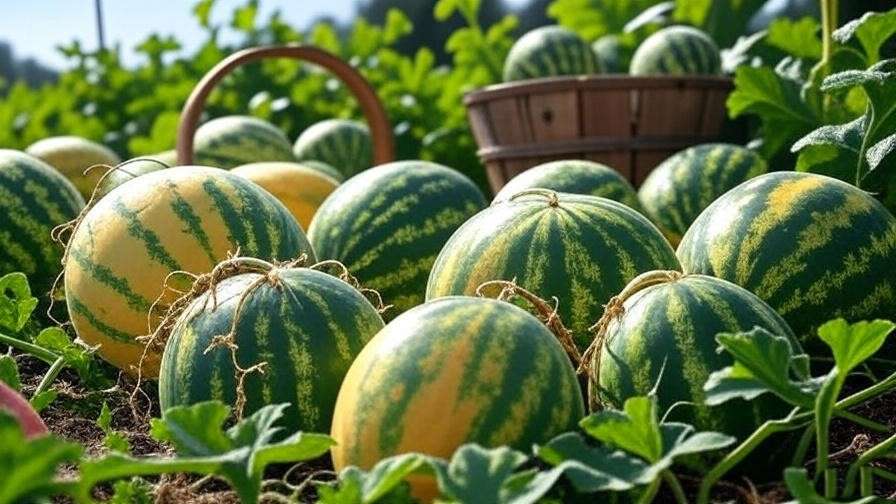
Proper Harvesting Techniques
Use sharp shears or a knife to cut the stem about 2 inches above the fruit, avoiding damage to the vine or melon. Handle gently to prevent bruising. Wear gloves to protect against prickly vines. Clean tools between cuts to avoid spreading disease. Store harvested melons in a cool, shaded area until ready to use.
Storing and Preserving Your Harvest
Whole watermelons store for 2–3 weeks at 50–60°F in a cool, dry place. Refrigerate cut melons for up to a week, wrapped tightly to retain moisture. For longer preservation, freeze watermelon cubes for smoothies or blend into juice for freezing. Try pickling rinds for a tangy treat. A colorful watermelon salad with feta and mint is a refreshing way to showcase your harvest.
Troubleshooting Common Growing Challenges
Why Aren’t My Watermelons Growing Vibrantly?
If your colorful watermelons lack vibrant hues or fail to thrive, several factors could be at play. Poor color development often stems from insufficient sunlight or nutrient imbalances. Ensure plants receive 6–8 hours of direct sun daily, as shade can dull fruit color. Low potassium levels may also hinder vibrancy—apply a high-potassium fertilizer (e.g., 5-10-15) during fruiting, as recommended by the University of Florida IFAS Extension. Another culprit is improper variety selection; for instance, ‘Tendersweet Orange’ needs warm, long seasons to develop its rich orange flesh. Test soil regularly and adjust nutrients to maintain a pH of 6.0–6.8. If fruits are small, inadequate pollination may be the issue—more on that below.
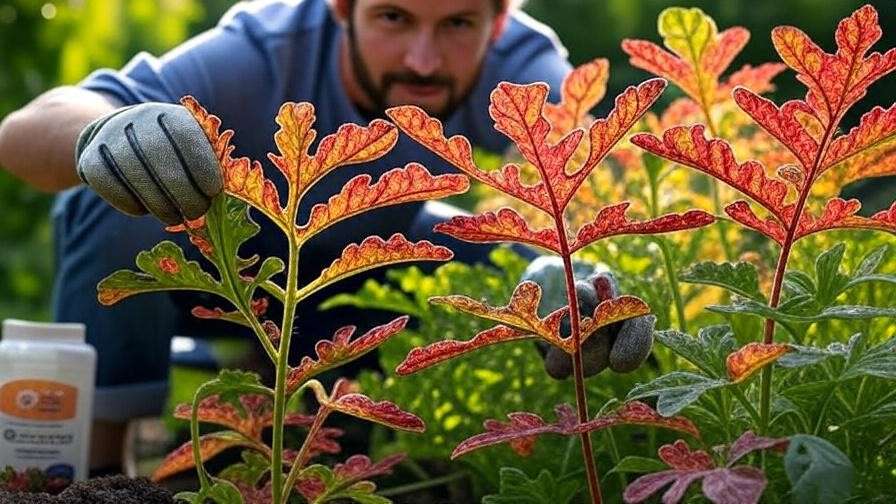
Dealing with Poor Fruit Set
Poor fruit set, where flowers drop without forming melons, frustrates many gardeners. Common causes include insufficient pollination, extreme heat, or water stress. Watermelons rely heavily on bees for pollination, so a lack of pollinators can reduce yields. Hand-pollination is a reliable fix: use a small brush to transfer pollen from male flowers (thin-stemmed) to female flowers (with a small bulb at the base). Perform this in the morning when flowers are open. Heat stress above 90°F can also cause flower drop—provide shade cloth during heatwaves. A case study from the North Carolina State Extension showed a 30% yield increase after gardeners implemented hand-pollination and shade strategies. Ensure consistent watering to support fruit development.
Overcoming Environmental Stress
Environmental challenges like heatwaves, drought, or heavy rain can stunt colorful watermelon growth. During heatwaves, mulch with straw or wood chips to retain soil moisture and cool roots. For drought, increase watering frequency while ensuring proper drainage to avoid root rot. Heavy rain can lead to fungal issues—use raised beds or mounds to improve drainage, as advised by the Texas A&M AgriLife Extension. A gardener in Georgia successfully grew ‘Cream of Saskatchewan’ during a wet season by using raised beds and organic mulch, maintaining healthy vines despite excessive rain. Monitor weather forecasts and adapt care practices to protect your plants.
Expert Tips for Maximizing Colorful Watermelon Success
To elevate your colorful watermelon game, try these advanced techniques:
- Use Reflective Mulch: Silver or red plastic mulch boosts light reflection, enhancing fruit color and speeding ripening, as noted in a University of California study.
- Mulch for Moisture: Apply 2–3 inches of organic mulch (e.g., straw or grass clippings) to retain moisture and suppress weeds.
- Monitor Soil Temperature: Use a soil thermometer to ensure temperatures stay above 70°F, especially during early growth.
- Boost Pollination: Plant pollinator-friendly flowers like zinnias or sunflowers nearby to attract bees.
- Rotate Crops: Avoid planting watermelons in the same spot for 3–4 years to prevent soil-borne diseases.
- Test Ripeness: Gently press the rind—if it resists slightly, the melon is likely ripe.
Download our free colorful watermelon care checklist (link to PDF) for a handy reference to track planting, fertilizing, and harvesting tasks.
FAQs About Growing Colorful Watermelons
How Long Does It Take for Colorful Watermelons to Grow?
Growth timelines vary by variety. ‘Yellow Doll’ matures in 65–75 days, while ‘Moon and Stars’ takes 85–95 days. Factors like climate, soil quality, and care practices influence timing. Start seeds after the last frost and monitor for ripeness signs like a yellow belly or dried tendril.
Can I Grow Colorful Watermelons in Containers?
Yes, compact varieties like ‘Yellow Doll’ thrive in containers. Use a 15–20-gallon pot with drainage holes, filled with a mix of potting soil and compost. Provide a trellis for vine support and ensure full sun. Water consistently and fertilize biweekly with a balanced fertilizer.
What’s the Best Way to Ensure Vibrant Colors in My Watermelons?
Vibrant colors depend on sunlight, soil health, and variety choice. Ensure 6–8 hours of direct sun, maintain soil pH at 6.0–6.8, and use potassium-rich fertilizers during fruiting. Choose varieties like ‘Tendersweet Orange’ for bold hues and follow proper care practices.
Are Colorful Watermelons Harder to Grow Than Regular Ones?
Not necessarily. Colorful watermelons have similar needs to traditional varieties: warm temperatures, well-drained soil, and consistent care. Some heirlooms like ‘Moon and Stars’ may require longer seasons, but with proper planning, they’re accessible to most gardeners.
How Can I Improve Pollination for Better Fruit Yield?
Attract bees with companion plants like borage or clover. If pollination is low, hand-pollinate by brushing pollen from male to female flowers. Remove row covers during flowering to allow pollinator access. A study from the University of Minnesota found that hand-pollination increased yields by up to 25% in low-pollinator areas.
Conclusion
Growing colorful watermelons is a rewarding journey that transforms your garden into a vibrant showcase. By choosing the right variety, preparing nutrient-rich soil, providing consistent care, and tackling challenges like pests or poor fruit set, you can harvest stunning, flavorful melons. This guide, rooted in decades of horticultural expertise and backed by trusted sources like university extensions, equips you with everything you need to succeed. Start planting today, and share your colorful watermelon success stories in the comments below! For more plant care tips, explore our articles on heirloom vegetables or organic pest control.

